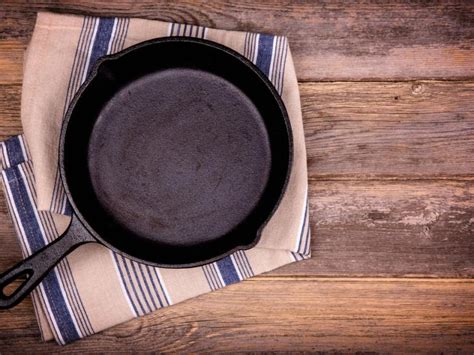Teflon alternatives
1. PTFE (Polytetrafluoroethylene)
PTFE is the chemical name for the compound that makes up Teflon. It is a fluoropolymer consisting of carbon and fluorine atoms. PTFE has a wide range of applications, including:
- Non-stick cookware
- Electrical insulation
- Chemical-resistant coatings
- Medical implants
2. Fluoropolymers
Fluoropolymers are a family of synthetic plastics that contain fluorine atoms. Teflon (PTFE) is one of the most well-known fluoropolymers, but there are others with similar properties:
a. PFA (Perfluoroalkoxy alkanes)
PFA is another fluoropolymer with similar properties to PTFE. It has better thermal stability and can withstand higher temperatures than PTFE.
b. FEP (Fluorinated Ethylene Propylene)
FEP is a copolymer of hexafluoropropylene and tetrafluoroethylene. It has excellent electrical insulation properties and is often used in wire and cable insulation.
c. ETFE (Ethylene Tetrafluoroethylene)
ETFE is a fluoropolymer with good mechanical strength and excellent chemical resistance. It is often used in the chemical processing industry.
3. Ceramic Non-Stick Coatings
Ceramic non-stick coatings are an alternative to Teflon and other fluoropolymers. These coatings are made from inorganic materials, such as silicon and oxygen, and are applied to cookware to create a non-stick surface. Some advantages of ceramic non-stick coatings include:
- PTFE-free
- Scratch-resistant
- Durable
- Easy to clean
4. Silicone Non-Stick Coatings
Silicone non-stick coatings are another alternative to Teflon. These coatings are made from silicone polymers and offer good non-stick properties. Silicone coatings are often used in bakeware and are known for their:
- Heat resistance
- Flexibility
- Non-toxic nature
- Easy release properties
5. Enameled Cookware
Enameled cookware is a traditional alternative to Teflon-coated pots and pans. Enamel is a glass-like coating that is applied to metal cookware, creating a smooth, non-porous surface. Enameled cookware is:
- Non-reactive
- Easy to clean
- Durable
- Available in various colors
Comparison of Teflon Alternatives
| Material | Non-Stick Properties | Heat Resistance | Chemical Resistance | Durability |
|---|---|---|---|---|
| PTFE (Teflon) | Excellent | Good | Excellent | Good |
| PFA | Excellent | Excellent | Excellent | Good |
| FEP | Excellent | Good | Excellent | Good |
| ETFE | Good | Good | Excellent | Excellent |
| Ceramic Non-Stick | Good | Excellent | Good | Excellent |
| Silicone Non-Stick | Good | Excellent | Good | Good |
| Enameled Cookware | Fair | Good | Excellent | Excellent |
FAQ
1. Is Teflon safe to use in cookware?
Teflon (PTFE) is generally considered safe to use in cookware when used properly. However, if Teflon-coated pans are overheated (above 500°F or 260°C), the coating can begin to break down and release toxic fumes. It is important to use Teflon-coated cookware according to the manufacturer’s instructions and to replace any pans that show signs of wear or damage.
2. Are ceramic non-stick coatings more environmentally friendly than Teflon?
Ceramic non-stick coatings are often considered more environmentally friendly than Teflon because they do not contain PTFE or other fluoropolymers. The production of PTFE involves the use of perfluorooctanoic acid (PFOA), which has been linked to environmental and health concerns. However, it is important to note that the environmental impact of ceramic coatings depends on the specific manufacturing process and materials used.
3. Can silicone non-stick coatings be used in the oven?
Yes, silicone non-stick coatings are generally safe to use in the oven. Silicone is heat-resistant and can typically withstand temperatures up to 428°F (220°C) or higher, depending on the specific product. It is important to follow the manufacturer’s guidelines for maximum oven temperatures and usage instructions.
4. How do I clean enameled cookware?
Enameled cookware can be cleaned using warm, soapy water and a soft sponge or cloth. Avoid using abrasive cleaners or scrubbers, as these can damage the enamel coating. For stubborn stains, you can soak the cookware in warm water and then gently scrub with a non-abrasive cleaner. Always allow the cookware to cool before cleaning to prevent thermal shock, which can cause the enamel to crack.
5. Are there any health risks associated with using fluoropolymers like PTFE?
While PTFE itself is generally considered stable and non-toxic, there have been concerns about the potential health risks associated with the production and use of fluoropolymers. PFOA, which was previously used in the production of PTFE, has been linked to various health issues, including cancer and developmental problems. However, PFOA has been largely phased out of use in the United States and other countries. When used properly and according to manufacturer guidelines, modern fluoropolymer-coated cookware is considered safe.
In conclusion, while Teflon is the most well-known name for PTFE-based non-stick coatings, there are several alternatives available, including other fluoropolymers, ceramic and silicone coatings, and traditional enameled cookware. Each alternative has its own unique set of properties, advantages, and disadvantages. When choosing a non-stick cooking surface, it is important to consider factors such as heat resistance, durability, chemical resistance, and potential health and environmental concerns. By understanding the options available and their respective properties, consumers can make informed decisions about the best non-stick cookware for their needs.


No responses yet